Cool Jobs: Linking animal health to human health
Veterinarians and other scientists study animal diseases to keep people healthy, too
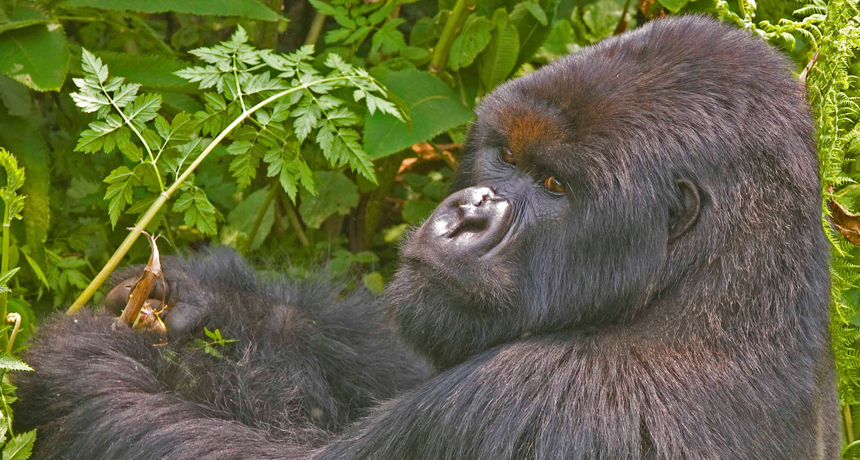
Each year, more people visit protected parks in Africa where gorillas live. Exposure to humans — and the viruses they carry — threaten the health of these great apes.
gmacfadyen/ Flickr (CC BY-NC-ND 2.0)
By Liz Devitt
Getting a cold is never fun. For mountain gorillas, sniffles can turn into a serious illness. And sometimes people can start that sneeze-fest in great apes and other animals.
Wildlife veterinarian Kirsten Gilardi worries about human viruses that can cause colds and other ailments in gorillas. She co-directs the Gorilla Doctors program. It is based at the University of California, Davis (UC Davis). Along with teams of other veterinarians, Gilardi protects the health of endangered great apes in Africa.
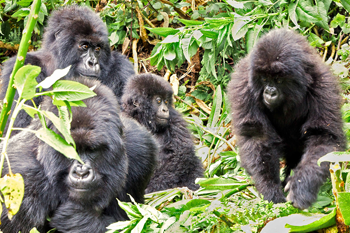
When gorillas get a cold, they “act just like me and you,” Gilardi says. “They get runny noses, a little cough and look like they have a headache.” But their immune systems aren’t used to fighting these human diseases. So their small cold can pose a big health risk. It can even prove fatal. To prevent that possibility, Gorilla Doctor veterinarians watch the animals’ health closely.
And colds aren’t the only threat. People can share many diseases with non-human animals. Humans unwittingly have infected wildlife, farm animals and household pets with a host of viruses, as well as bacteria, fungi and parasites.
Even more often, animals spread illnesses to people. Experts say that more than 75 percent of all new human diseases will come from germs carried by animals. These diseases are called zoonoses (Zoo-oh-NO-sees).
As the human population grows, more people will live closer to wild animals. That will make it easier for people to transmit their infections to other species.
Here we meet four scientists who study diseases in animals. Because people can come down with the same diseases, the researchers’ work helps people, too. This kind of scientific and medical work that links the well-being of all species is often called the “one health” approach.
Gorilla doctors
Gilardi became a veterinarian because she wanted to save wildlife. Now, she co-directs the Wildlife Health Center, at UC Davis. In 2009, the center partnered with the Mountain Gorilla Veterinary Project to care for mountain and eastern lowland gorillas. The project’s field headquarters is in the central African nation of Rwanda. Animals live in protected parklands there, as well as directly to the north in Uganda and the Democratic Republic of Congo.
Fewer than 1,000 mountain gorillas remain. Their numbers have dwindled. For years, people have hunted them for meat, killed them in the crossfire of wars and stolen their infants as illegal pets.
Each year, more people visit parks to see gorillas. To prevent the spread of illnesses, the parks ask visitors to stay at least 7 meters (almost 23 feet) away from animals. But sometimes people — or the curious gorillas — still get close enough to spread disease. And tourists aren’t the only concern. The security patrols that protect gorillas from poachers — people who may try to steal or kill the animals — are always nearby, too.
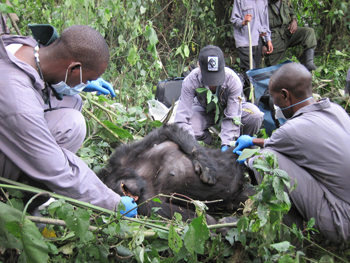
Respiratory diseases affect the lungs. “We’re seeing more respiratory diseases than we used to,” says Gilardi. One 2013 study in the Journal of Zoo and Wildlife Medicine reviewed 20 years of veterinary care for wild gorillas. During the first 15 years, viral outbreaks of respiratory disease struck nine times. An equal number hit in just the last five years.
A gorilla mom and her baby died in one 2009 outbreak. Tests pointed to a human virus. “That was first direct evidence of a human virus causing the death of an endangered mountain gorilla,” Gilardi says.
Teams run daily health checks on all gorillas that allow them to get close enough. They monitor more than 500 gorillas every day, across three parks. Illness isn’t hard to detect. “Every night, a gorilla builds a new nest to sleep in,” notes Gilardi. “If it’s 10 a.m. and a gorilla is still in its night nest, that’s a sure sign of not feeling good.”
After years of caring for mountain gorillas, Gilardi recently co-wrote a guide to help others who support the great apes’ welfare. Those others include researchers, wildlife managers and tourism companies. The new guide notes that there is no such thing as zero risk of disease. Still, minimizing the risk of people spreading their germs with wild gorillas could prevent catastrophic losses in the remaining great apes.
Virus hunting
The cold viruses that gorillas get from people are only one example of how different species can swap disease.
Another wildlife veterinarian, Jonna Mazet, leads a worldwide hunt for viruses. The project is called PREDICT. Her goal is to find new germs and study them before the next outbreak of an unexpected zoonotic disease.
Since 2009, Mazet and her colleagues have looked in 31 countries. They trap live animals such as bats, rodents and non-human primates (such as monkeys). All of these groups have been shown to spread viruses to people before. Using samples of blood, urine, feces or throat swabs, they checked for microscopic evidence of new viruses.
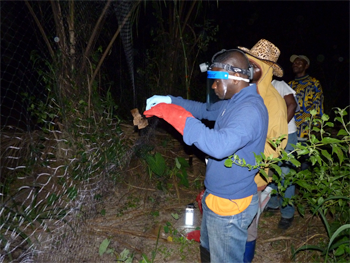
“In the first five years of the project, we found more than 800 new viruses. That’s double the number of mammalian viruses that we knew existed,” says Mazet. She directs the One Health Institute at the UC Davis School of Veterinary Medicine.
Mapping where the viruses have been found has helped explain how people get sick. In 2012, a new coronavirus (named for its crown-like shape) started infecting people in the Middle East. PREDICT maps helped to pinpoint animals in other countries that hosted — and maybe helped transmit — similar viruses.
Wildlife often offer the best warning for viruses that threaten us all, Mazet says.
Monkey watch
Ilaria Agostini works in Argentina, a country in southeastern South America. Several years ago, there, a startling rash of deaths struck down brown howler monkeys. The population was almost wiped out. The deadly infection behind those deaths also can sicken people. So watching out for these critically endangered monkeys may help human health, too.
Growing up in Italy, Agostini always wanted to study monkeys. But there were none there. So in graduate school, back in the 2000s, she decided to study primate behavior in Argentina’s Atlantic Forest. Several monkey species live there. They include brown howler monkeys, black-and-gold howlers and black-horned capuchin (Cah-PEW-shun) monkeys.
In one study, she followed two species of howler monkeys to see how well they shared a forest area. Every day she went to watch them in El Piñalito Provincial Park. It is part of the Atlantic Forest. She carried binoculars, a compass, a notebook and a machete to cut trails. It wasn’t easy to follow the monkeys. Despite the loud howling they’re named for, the small primates don’t make any noise when they are scared. “I call them ‘little ghosts,’” Agostini says.
She observed the howlers for more than a year. What did they eat? When did they rest? How high did they climb in the trees? Over time, her records showed that the two species competed for the same things, but each had enough to survive. She finished that work in 2007.
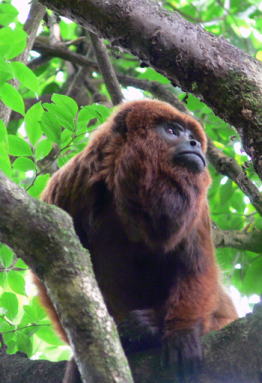
The next year, Agostini returned to the site for another project. She was shocked to find four dead howler monkeys.
Tests showed that the monkeys were killed by yellow fever. That’s caused by a virus spread by mosquitoes in some parts of South America and Africa. In people, yellow fever starts with flu-like symptoms. In some cases, it leads to more serious illness — even death. When monkeys are infected with it, they die within days.
By the time the outbreak in El Piñalito Provincial Park ended in 2009, all the monkeys Agostini had studied were dead. She worried the entire population in Argentina might go extinct.
“That was the beginning of my work as a conservationist,” Agostini says. Today, she is an ecologist at the Subtropical Biology Institute in Puerto Iguazú. In 2013, she joined a group of scientists who were making a plan to help the howler population recover from outbreaks of yellow fever.
The group works on two fronts. They need to learn more about the monkeys and they need to understand more about the mosquitoes that carry the disease. So first, they tried to count how many monkeys were left. A 2014 survey turned up no evidence of the “little ghosts” where they had recently lived. But park rangers have spotted howlers in other former haunts. And photos by tourists show howlers in places they’d never been seen before. Where the monkeys are coming from is unknown, but they are returning.
The group hopes to start programs soon that could watch the monkeys more closely. Ideally, park rangers and people living near the howlers could check for sick monkeys every month. That way, health officials would know if howlers had yellow fever before people in the area got sick. This might give health teams more time to vaccinate people and protect them from the disease. And it would teach researchers more about what yellow fever does in these monkeys.
As for mosquitoes, last year the group started trapping them. There are only two kinds of mosquitoes that spread yellow fever. So Agostini and her colleagues want to know when these two types come near the howlers again.
“There are so many gaps in what we know about yellow fever,” Agostini says. “Everything we learn will help the howlers and people.”
All connected
Patricia Conrad didn’t expect to have a career studying parasites. She’s a veterinarian at the UC Davis School of Veterinary Medicine. She’s also an expert in the diseases caused by parasites. In 1980, when she was in Colorado training to be a veterinarian, her goal had been to care for cats, dogs and farm animals. But before graduating, she began to wonder what else she might do with this training.
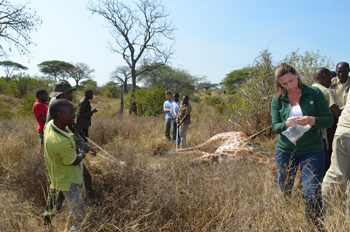
A scholarship gave Conrad the chance to study at the Centre for Tropical Veterinary Medicine. It’s at the University of Edinburgh in Scotland. There, one professor sparked what soon became a lifelong interest in a deadly parasite of cattle. (Parasites are organisms that live on or in another species. Although the parasites get benefits from this arrangement, they don’t provide any to the species that host them.) Conrad moved to Kenya to learn more about the ticks that spread the parasite. By the time she arrived at UC Davis in 1988, she had plenty of experience in this field of research.
Her training proved helpful when researchers discovered a tiny parasite was giving southern sea otters a big problem. In 2003, Conrad was part of a study that looked for the cause of death in 105 southern sea otters. The results were a surprise. More than 16 percent of them had died from a brain infection known as encephalitis (En-SEFF-uh-LY-tiss). The infections were caused by a parasite that finds a host in many warm-blooded land animals — including people.
House cats typically carry this parasite — Toxoplasma gondii (Tok-soh-PLAZ-muh GON-dee-eye). Scientists were mystified, she recalls: “How did a parasite with a land-based host get into ocean animals” off the coast of California?
Cats are the only animals known to shed the parasite’s eggs in their poop. That shedding allows Toxoplasma to move out of the cat and into the environment. The parasite’s eggs, known as oocysts (OH-uh-sists), can last a long time in soil. But otters never spend any time on land. So how did they become infected?
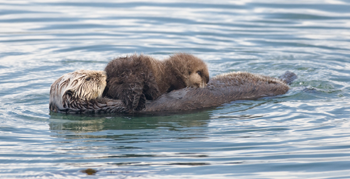
Answering that question took a whole team, Conrad notes.
Local residents helped track where wild-roaming domestic cats and bigger wild cats (such as bobcats) left oocysts in the soil. Then hydrologists, scientists who study water, mapped where water running off of contaminated soils might have carried those eggs into streams and onto beaches.
Oceanographers and biologists figured out that free-floating Toxoplasma gondii lasts a long time in the ocean. Mussels and snails could suck up the eggs along with sea water. When sea otters ate these foods, they picked up the oocysts, too. And once inside their bodies, the eggs hatched, allowing the parasites to travel — including into the otters’ brains.
People and other animals eating similar seafood could face the same risk.
“When it comes to human and veterinary medicine there is much more in common than there is different,” Conrad says. In 2014, she became the associate dean for global programs in the UC Davis School of Veterinary Medicine. There, she says, “I’m helping people see the interconnectedness of humans, animals, and the environment.”
This is one in a series on careers in science, technology, engineering and mathematics made possible with generous support from Alcoa Foundation.







